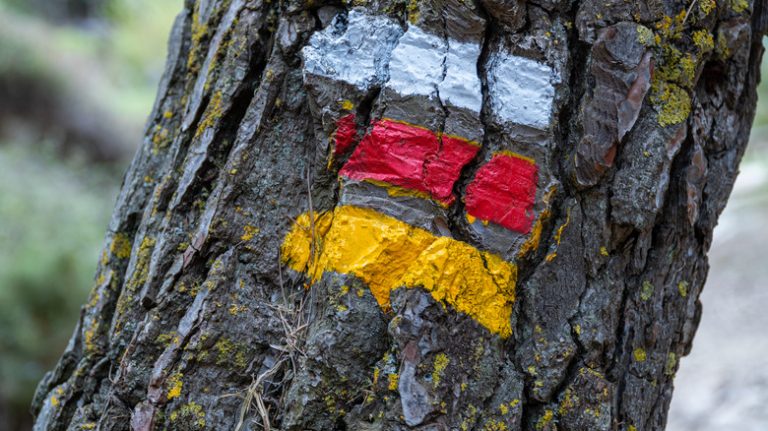Palm fronds, also known as palm leaves, are special types of leaves that are grown by palm trees. These fronds hang down from the top of the tree and can be quite long, depending on the type of palm. They are typically green in color, but as they age, they may turn brown. When the fronds have fallen from the tree, they can be disposed of, but it’s important to know how to handle them properly because they have a few uses.
One of the best things about palm fronds is their ability to withstand heat and wind. Their smooth and flexible characteristics allow them to sway in the wind without breaking. This makes them perfect for tropical and windy environments.
In general, palm fronds do not require much care. They naturally grow and fall off the tree as part of their life cycle. However, if you want to preserve them for any uses, you can dry them. Dried palm fronds can be used for decoration purposes, such as creating centerpieces or making crafts. They can also be used for thatching roofs in tropical areas.
There are many different types of palms, each with its own unique frond characteristics. Some palms have pinnate fronds, which are feathery and fan-like, while others have palmate fronds that are shaped like a hand. The length and shape of the fronds can vary greatly between palm species.
So, the next time you see palm fronds in your garden or in a bunch for sale, you’ll know what they are and how they can be used. Whether you’re disposing of them or preserving them, it’s important to handle palm fronds with care.
Source: https://example.com
Palm Fronds – Dried
Palm fronds are the leaves of palm trees. They are a common sight in tropical gardens and are often used for various purposes. While palm fronds are naturally green and vibrant when they are alive, they may turn brown and dry when they fall from the tree. If you have a palm tree in your garden, you may need to know how to process and care for the dried fronds.
When a palm frond is dried, it loses its moisture content and becomes stiff, making it suitable for various uses. Dried palm fronds can be used for crafts, such as making baskets and hats, or for decorations, such as wall hangings and wreaths. They can also be used as thatch for roofs or as a natural shade cover.
To dry palm fronds, you can simply leave them in a warm and dry place, out of direct sunlight and away from any wind. The drying process may take a few weeks, depending on the heat and humidity of your environment. As they dry, the fronds will become brittle and may easily break or crumble if not handled with care.
Once the fronds are fully dried, you can store them in a cool, dry place until you are ready to use them. It’s important to handle dried palm fronds with care, as they can be sharp and may cause injury if mishandled. If you plan on using the fronds for crafts or decorations, you may need to trim them to your desired size and shape.
When disposing of dried palm fronds, it’s best to either compost them or use them as mulch in your garden. They can add nutrients to the soil as they break down. Alternatively, you can simply toss them in your regular trash if you don’t have a compost pile or garden.
In general, palm fronds do not require any special care or pruning from you. They naturally fall from the tree as they age, and new fronds will grow in their place. If you notice any brown or wilted fronds while the tree is still alive, you may want to remove them to improve the tree’s overall appearance.
Now that you know how to care for dried palm fronds, you can make the best use of these natural resources in your garden or for various crafts and decorations. Whether you tweet them for a tropical look or turn them into a bunch of dried leaves, palm fronds can add a touch of exotic beauty to your surroundings.
What Are Palm Fronds
Palm fronds are the large, fan-like leaves that grow from the top of palm trees. They are an essential part of the palm tree because they play a crucial role in the tree’s survival and growth. Palm fronds are pinnate leaves, which means that they consist of multiple leaflets arranged along a central axis, giving the fronds a feather-like appearance.
When caring for palms, it is important to know how to properly handle palm fronds because they require special attention. Unlike many other types of leaves, palm fronds are smooth and easily damaged. If not handled with care, they can turn brown and fall off the tree.
In tropical and subtropical regions where palm trees are native, palm fronds play a significant role in the environment. They provide shade by blocking out the sun’s rays, which can help to lower the temperature. Additionally, palm fronds are specifically designed to withstand strong winds, making them an excellent natural defense against storms.
Palm fronds can be preserved and dried for various uses. They are often used in crafts, such as making brooms, baskets, and hats. In some cultures, palm fronds are also used for roofing material and as a source of fuel. Additionally, the fallen fronds can be used as mulch in the garden or disposed of as green waste.
In general, palm fronds have many characteristics that make them unique. They are flexible, allowing them to move with the wind without breaking. Palm fronds also have a high surface area, which helps them capture more sunlight for photosynthesis. Furthermore, palm fronds are resistant to heat and can withstand high temperatures.
If you’ve ever cared for palm trees, you may know that pruning palm fronds is necessary for the tree’s overall health and appearance. Typically, the palm fronds at the center of the tree are the oldest and may turn brown or yellow. By removing these fronds, you allow the palm tree to focus its energy on new growth.
In conclusion, palm fronds are a vital part of a palm tree’s life. They provide shade, protection from the wind, and contribute to the tree’s overall beauty. Whether you are caring for a palm tree in your garden or encountering palm fronds in their natural environment, understanding their characteristics and uses will help you appreciate these remarkable leaves.
If you’ve never grown a palm tree you may not know how to take care of those brown palm fronds. They do require special handling.
When palm fronds turn brown, it is a sign that they are no longer healthy and need to be pruned. Pruning is the process of removing the dead or dying leaves, making room for new growth. If you don’t prune these brown fronds, they can easily fall down and become a hazard. Pruning is best done between the trunk and the center of the tree, where the fronds naturally fall.
Palm fronds can be preserved and used for various purposes. Once they have fallen from the tree, they can be dried and used in crafts or as decorations. You can also use them as a heat source or as material for compost. It’s important to note that not all types of palms have the same characteristics when it comes to their fronds. Some have smooth, pinnate leaves, while others have spiky, fan-shaped fronds that can withstand strong winds.
Caring for palm fronds requires a little extra attention. Unlike other types of leaves, palm fronds do not easily decompose. They can last longer and withstand heat and wind. However, if you want to keep your palm tree healthy and looking its best, it’s important to regularly prune and remove the brown fronds. This will ensure that the tree can continue to grow and thrive.
In general, palm fronds are a natural part of the life cycle of palm trees. They serve as a source of nutrients and protection for the tree. Taking care of them involves knowing what they are, how they are grown, and the special handling they require.
In conclusion, if you’ve never grown a palm tree, you may not know how to take care of those brown palm fronds. They do require special handling, including pruning and preserving. Understanding the characteristics and life cycle of palm fronds is essential for the general care of palm trees.
What Is a Palm Frond
A palm frond is a large leaf of a palm tree. Palm trees have unique leaves called fronds, which are different from the leaves of other types of trees. These fronds are smooth and can range in size from a few feet to over 20 feet long. They are often found in tropical and subtropical regions, where palm trees thrive.
The fronds of a palm tree are known for their pinnate shape, which means they have multiple leaflets arranged on either side of a central stem. This pinnate structure allows the fronds to easily capture and withstand wind, making them well-adapted to their natural environment.
One characteristic of palm fronds is that they do not fall off the tree like the leaves of other trees. Instead, they gradually turn brown and dry out while still attached to the tree. This process can take several months or even years, depending on the specific type of palm tree.
If you have palm trees in your garden or yard, you may need to prune the fronds from time to time. Pruning is the process of removing dead or unwanted fronds to maintain the tree’s appearance and promote healthy growth. However, it’s important to know how to properly prune palm fronds, as you don’t want to harm the tree.
Once you’ve pruned the fronds, you can dispose of them in several different ways. Some people choose to compost the fronds, while others may use them for decorative purposes or as a heat source. Palm fronds can also be preserved and used for crafts or as material for roofing and thatching.
In general, caring for palm fronds doesn’t require any special handling. They are relatively low maintenance and can withstand a range of conditions. However, it’s important to provide them with enough water and sunlight to keep them healthy and ensure a long life.
In conclusion, palm fronds are an essential part of palm trees and have unique characteristics that make them stand out from other types of leaves. Whether you have palm trees in your garden or just appreciate their beauty, understanding the role and care of palm fronds can enhance your appreciation for these tropical trees.

